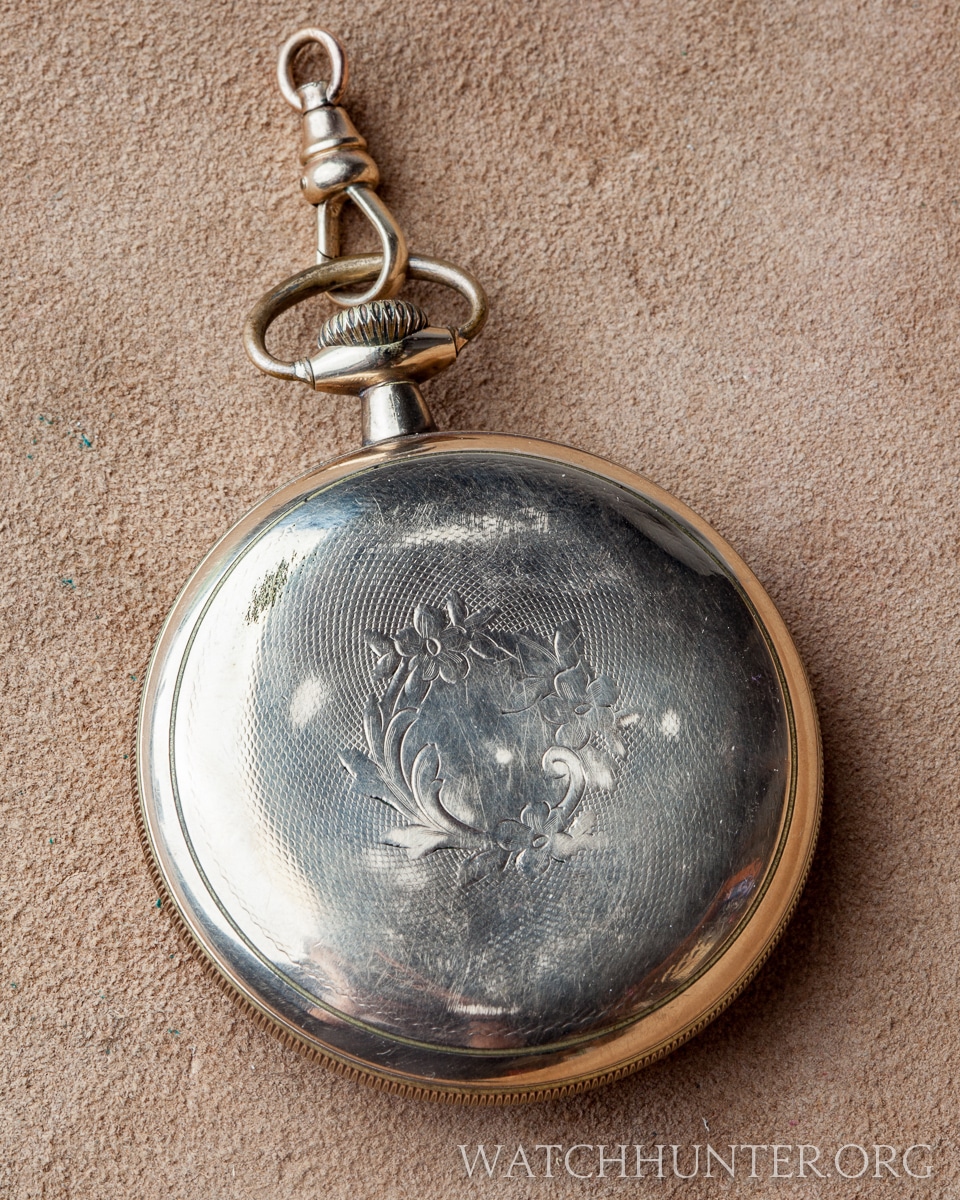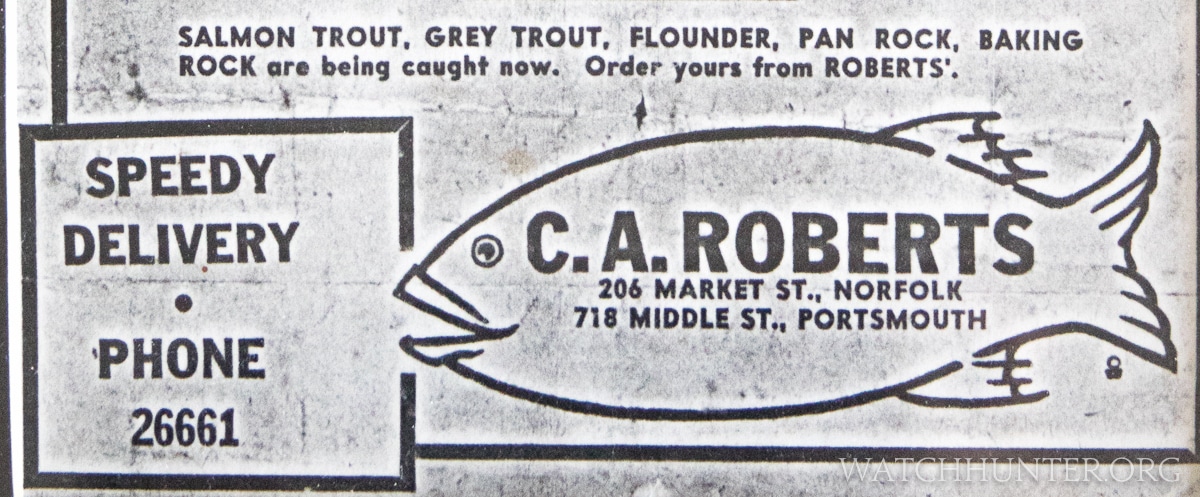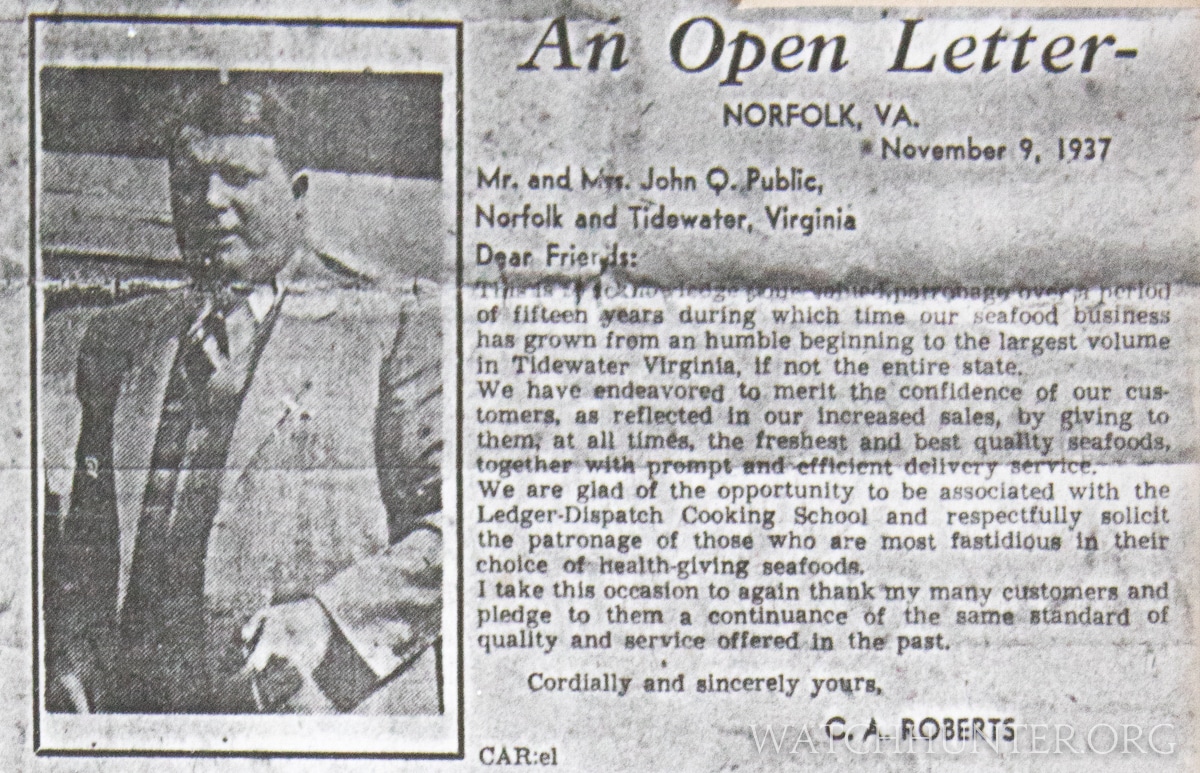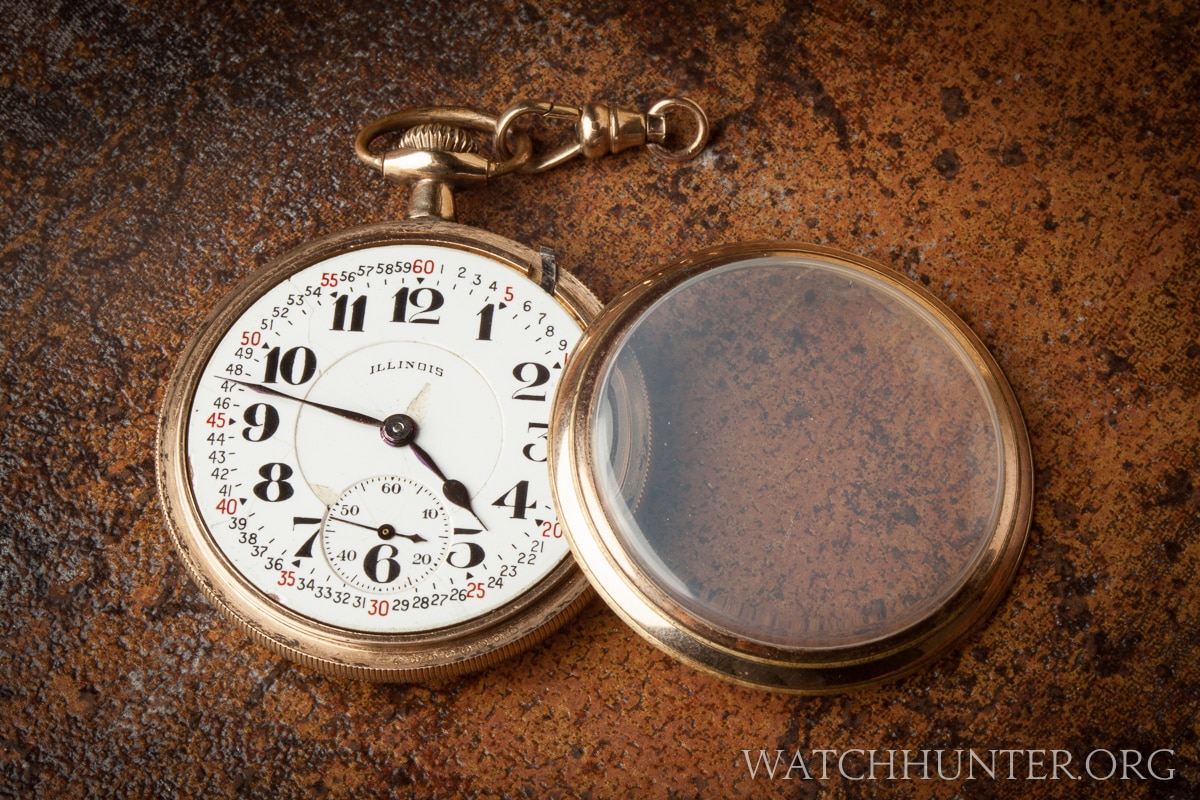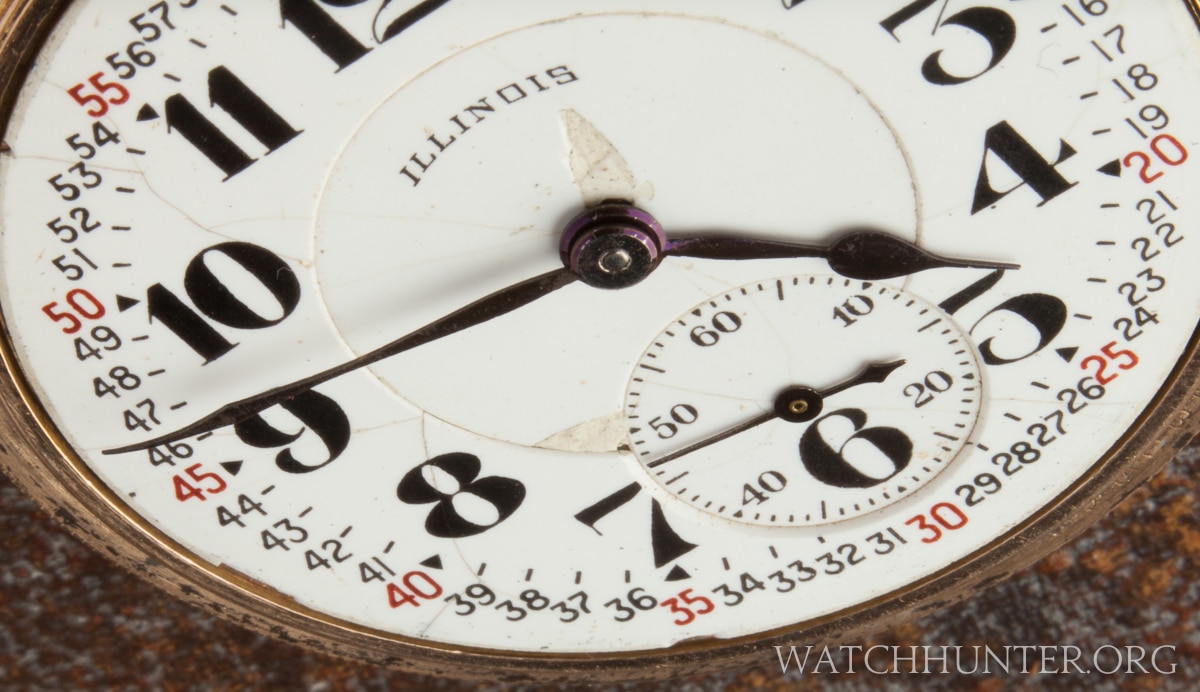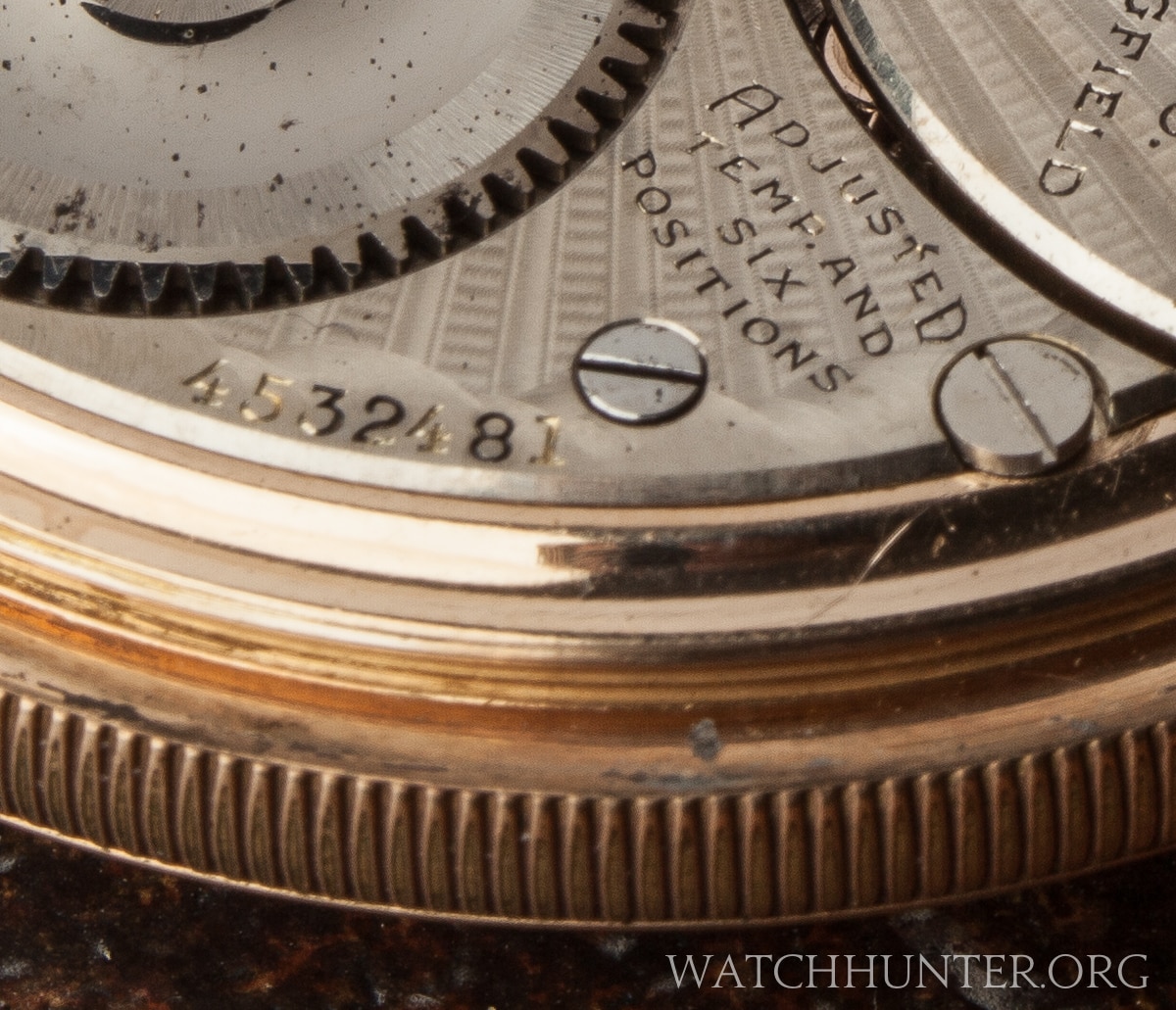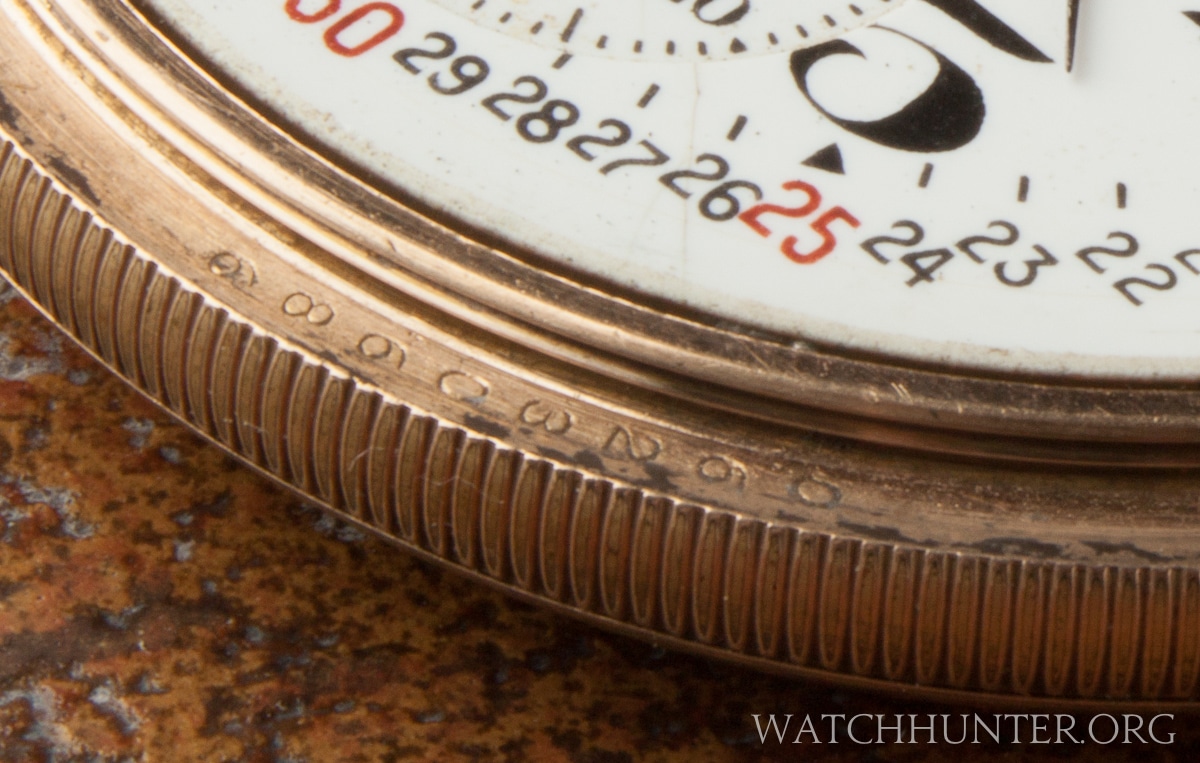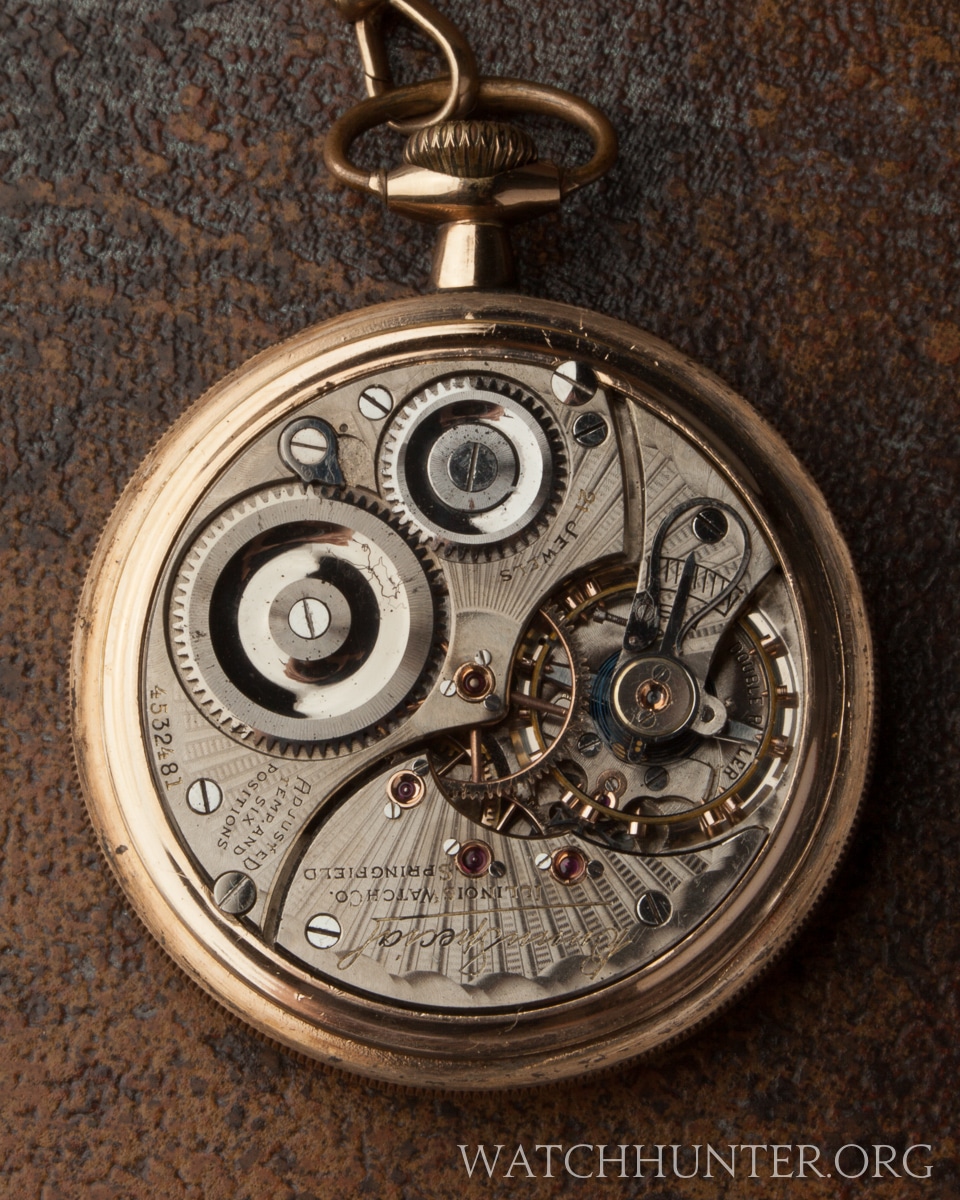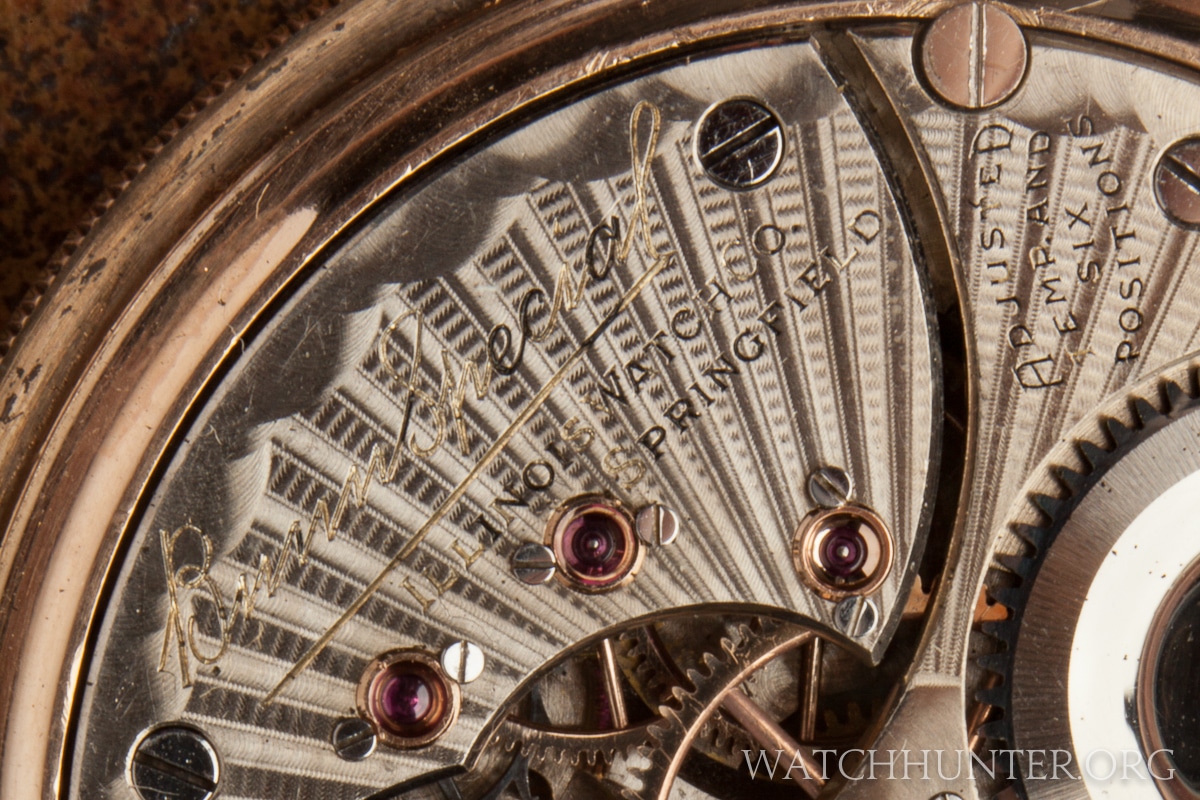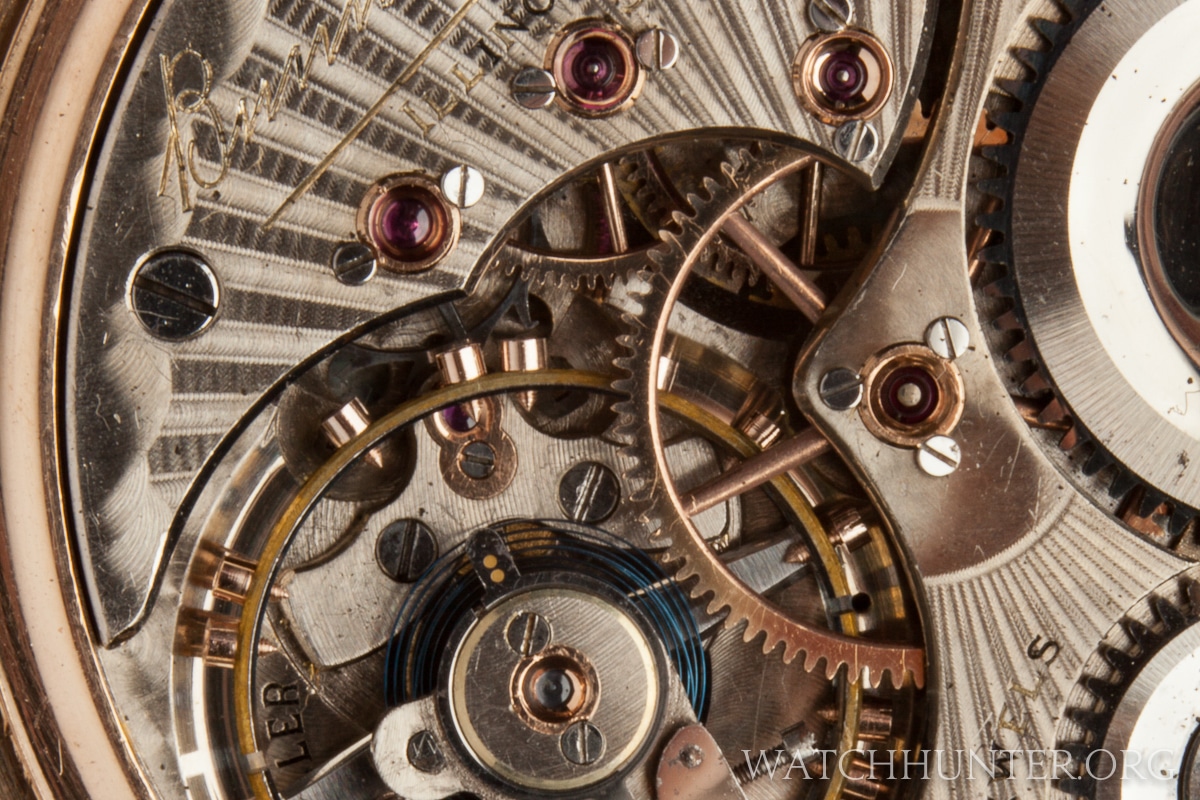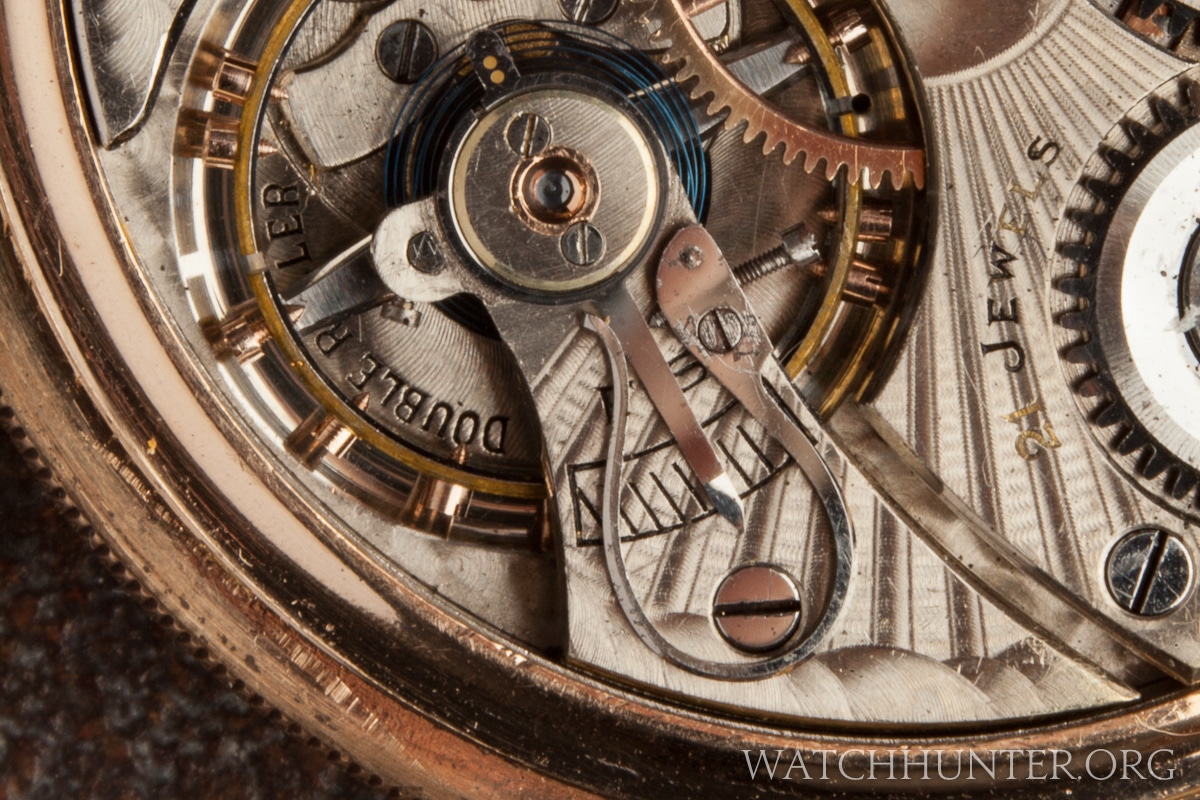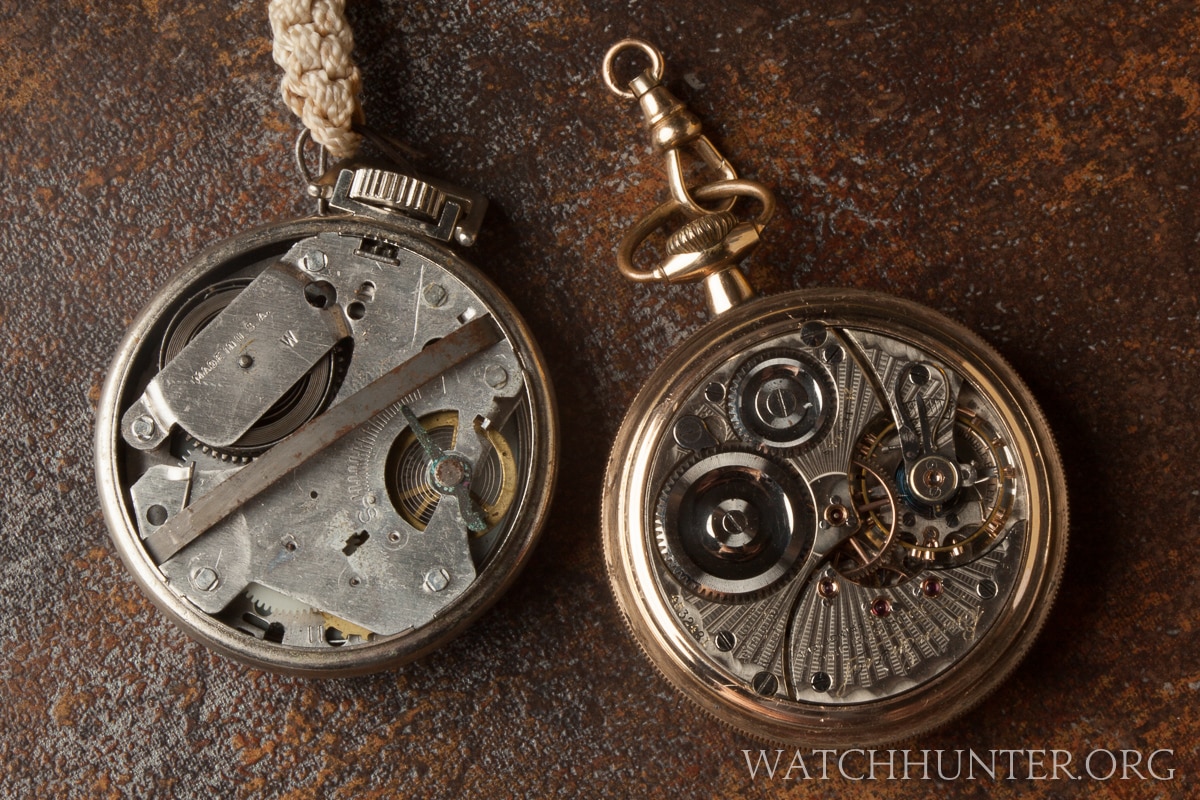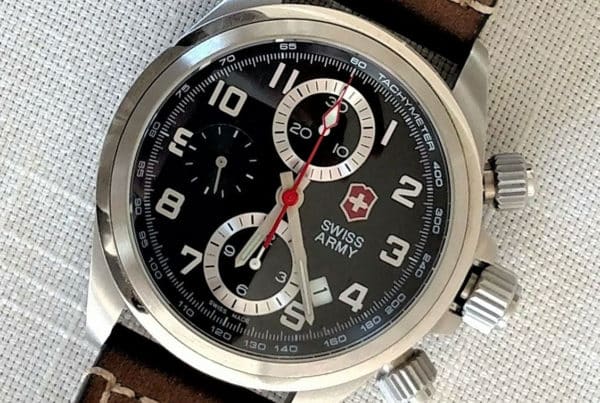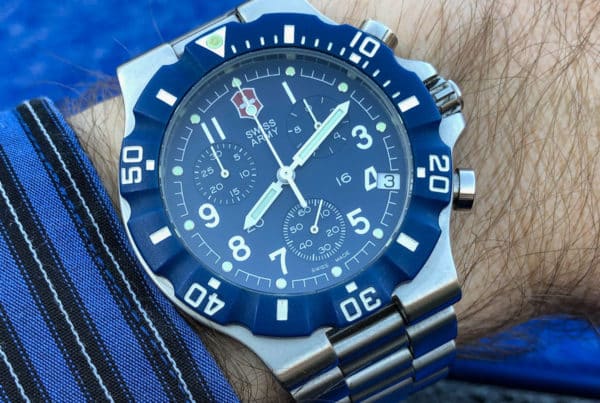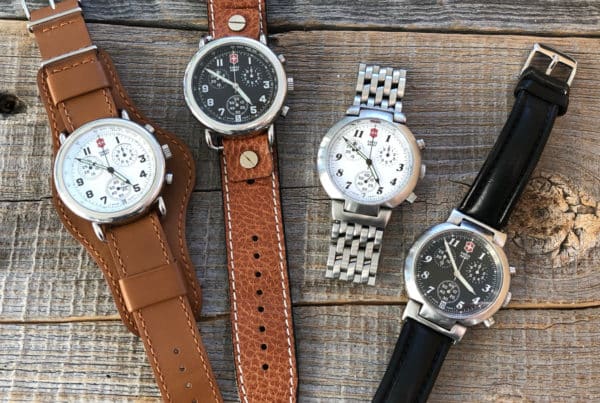I am going to say for the record that pocket watches are a new fascination for me. I am a newbie when it comes to this subject matter, but this one kinda fell into my lap. A photographer pal of mine called me one day and said that he had a very old pocket watch that belonged to his grandfather. He asked if I would be interested in photographing and writing about it.
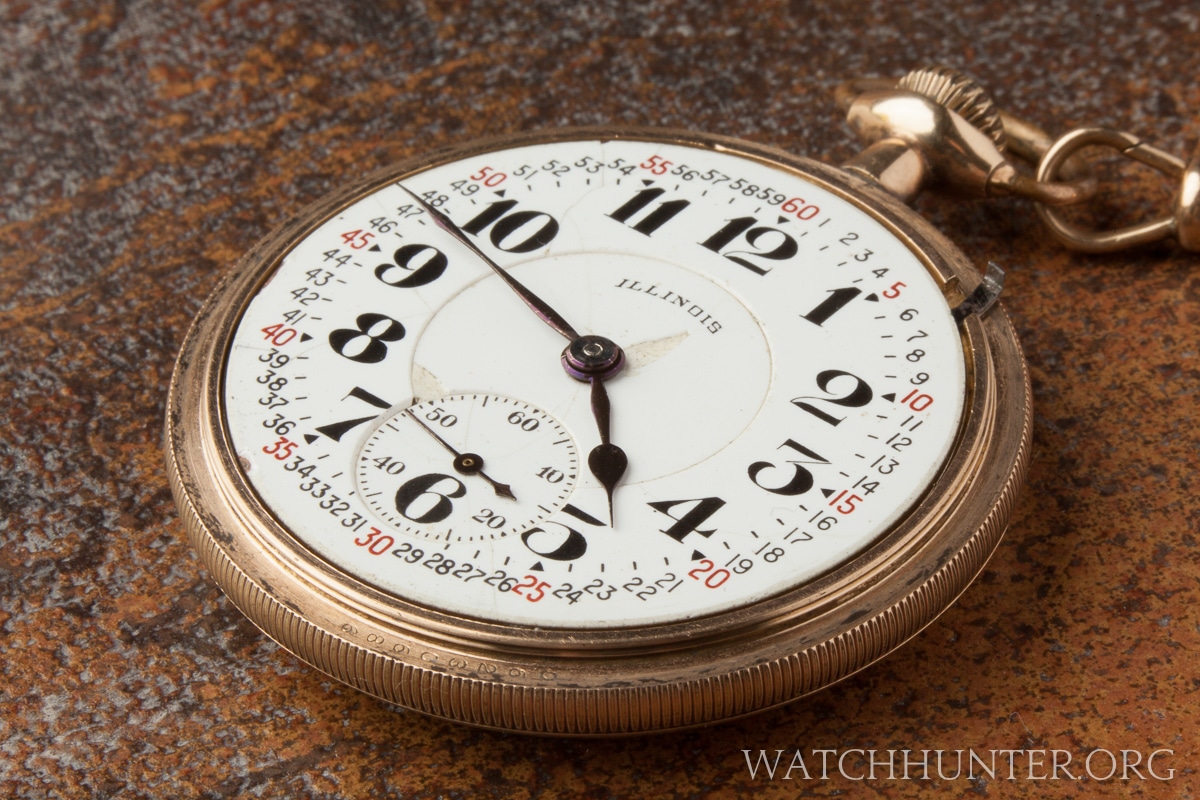
A 1924 Illinois Bunn Special railroad grade movement in a B&B Royal gold plated case with the cover removed
If you have not figured out by now, I am a sucker for a good story. My watch articles take me on journeys to unexpected places and I learn something every time that I write one. This info just does not appear in my brain. I try to make sure the facts are correct before I publish anything. That is my disclaimer to any expert that can tell the age of a watch by tasting the metal… you know who you are.
The watch appeared in the mail with a handful of photos and a letter. Much of the letter contains the personal history of the man who owned the watch. That person was Claude Algic Roberts, who was a successful seafood salesman in Portsmouth, Virginia during the early- to mid-20th century. Check out part of this ad from 1937. That is the man himself with a personal solicitation to buy from him. Not bad for a guy with a 3rd-grade education. Hard work often took the place of resumes and degrees back in the day. Back then, phone numbers were much shorter… only 5 numbers!
So, first things first… what is the model, how old is this watch? The first part is easy. It is an Illinois Bunn Special Model 9 with an open face with a plastic screw-on cover for front and screw-on case back.
A wonderful enamel dial with printed numbers, a gorgeous set of blued hands and a sculpted dial with 2 recesses are extremely legible. This one has a chipped dial, but it is still awesome.
Pocket watches can be tricky to date because this specimen has non-matching serial numbers on it. However, the age is generally determined by the number on the movement itself, 4532481, which dates this to 1924.
The case’s serial number is 6230686 so no match. This is not uncommon because movements were switched in and out of different cases all the time. Just a couple of screws held the movement into the case. More on this inconsistency later…
At first, this watch perplexed me. For a watch that is 92 years old, it is in pretty good shape. While the outside shows average signs of wear, the internal movement is incredibly well preserved. I did not say pristine because these types of cases with a screw-on back were susceptible to getting dirt into the movement.
What might appear clean to the naked eye looks a little funkier under magnification. Still, this movement is finished by true craftsmen. The details are staggering considering that most people would not be looking at the movement all the time. Below, you can read “Bunn Special. Illinois Watch Company. Springfield.”
Look at the rubies and ray pattern decoration on the bridge. The hair spring appears to be blued too. Bluing is accomplished by heating steel to a certain temperature. Cook it too little or not long enough and the color will not be correct.
The 21 jewel movement can be adjusted to 6 positions. See the requirements of a railroad watch listed later to understand this. The balance wheel has a double roller.
All this extra work that went into the decoration of watch movements seems like a colossal waste of effort to our modern eyes. But, the concept of competitive quality products and craftsmanship was alive back then as it might be with the mobile phone wars of today… the technology was gears and screws instead of silicon and batteries.
I opened the back of a junky 1970s pocket watch for comparison, and these timepieces are in different universes as far as quality goes. The railroad watches were the most accurate machines of their day.
What It Takes to Be Railroad Watch
From Wikipedia: “There was a higher grade of watch called railroad chronometer, which this watch qualified for. “Railroad chronometers, or Railroad Standard Watches, are specialized timepieces that once were crucial for the safe and correct operation of trains in many countries. A system called Timetable and Train Order, which relied on highly accurate timekeeping, was used to ensure that two trains could not be on the same stretch of track at the same time.” Good idea!
A typical U.S. railroad’s requirements for a watch in the early 20th century might include:
- only American-made watches may be used (depending on availability of spare parts)
- only open-faced dials, with the stem at 12 o’clock
- minimum of 17 functional jewels in the movement
- 16 or 18-size only
- maximum variation of 30 seconds (approximately 4 seconds daily) per weekly check
- watch adjusted to at least five positions: Face up and face down (the positions a watch might commonly take when laid on a flat surface); then crown up, crown pointing left, and crown pointing right (the positions a watch might commonly take in a pocket). Occasionally a sixth position, crown pointing down, would be included.
- adjusted for severe temperature variance and isochronism (variance in spring tension)
- indication of time with bold legible Arabic numerals, outer minute division, second dial, heavy hands,
- lever used to set the time (no risk of inadvertently setting the watch to an erroneous time, when winding the watch with the stem)
- Breguet balance spring
- micrometer adjustment regulator
- double roller escapement
- steel escape wheel
- anti-magnetic protection (after the advent of diesel-electric locomotives)
The biggest difference between this watch and a modern one (besides the fact that most of us wear wrist watches instead of hipster pocket watches) is the way it is set. Once the plastic cover is removed from the dial, the user pulls out a lever at the 1 o’clock position. This would allow the crown to set the time, and prevent accidental and potentially deadly resetting of the time when winding the movement at the crown. To think that energy from your hand is used to wind a spring, which then powers the watch for many hours is like breathing life into an inanimate object. Kinda magical really.
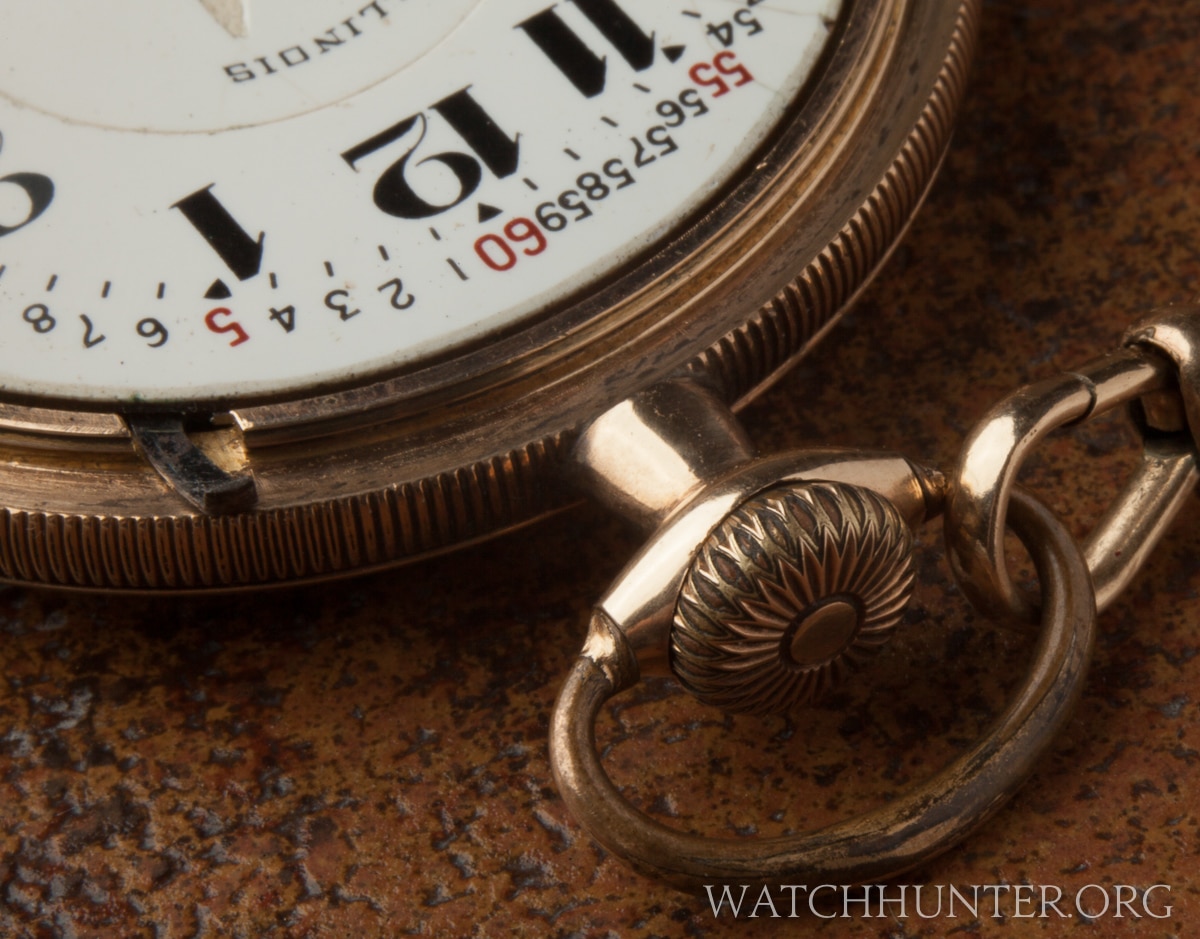
The lever used to set the time at the 1 o’clock spot. Check out the coin edge case and ornate crown!
Inside the case back cover more mysteries awaited me. There are at least 10 hand-scrawled numbers in the metal. I found out that those are watchmaker marks from adjustment or repair.
Inside the case back is the stamped engraving: “B&B ROYAL 20 YEARS”, which is why the case serial numbers do not match the movement’s numbers. The case was not made by the Illinois watch company.
From the National Association of Watch and Clock Collectors: “B&B stands for Bates & Bacon, who manufactured cases in New York from 1883 until they were sold to the Philadelphia Watch Case Co. in 1904. The Philadelphia Watch Case Co. often continued to use the case name and trademarks of companies that they had purchased, so there are B&B marked cases that date after 1904. The Royal was a grade of gold filled cases made by B&B. It used two plates of 14 Kt gold wedged over a center layer of brass in its manufacture and was warranted not to wear through to the brass layer for 20 years.”
So what ever happened to old C.A. Roberts? He lived a long life and eventually sold his original fish market business, but could not stay away. He ran another smaller fishing dock into the mid-1960s before his health failed. He died in 1968 and eventually the watch ended up in the hands of his grandson. I hope Roger cherishes this little time capsule every time he hears the healthy tick-tock that can be heard from several feet away. I know that I would.


